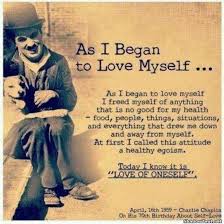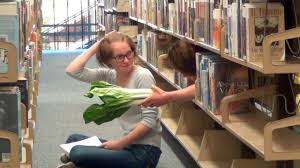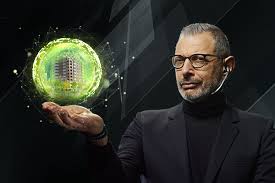
Tag Archives: self-love
Some believe love to be the most powerful force on the planet. Consequently, many believe love is the best solution to every situation. Fundamentally, that seems true, as long as love of self is kept high on the list of who or what to love. In other words, no, we can’t love others too much, but we can inadequately love ourselves.
The studies outlining the measurable, positive effects of love are extensive, from love shown to orphaned babies and love experienced in faith communities, to love creating bonds that literally carry information.
It is my firm belief that love will eventually prevail. And this notion is being studied scientifically by people like Gregg Braden. Mr. Braden’s work suggests the sign wave of love expands over time. To the contrary, it appears the sign wave of fear contracts with time. One could deduce, then, that love literally will prevail.
But since that extrapolation may not be realized for a while, we’re left wondering how best to love.
Food and the business of eating: curious stuffs. When you think about it, eating is one of the hardest things to force on someone. Consequently, eating holds secret keys. And these keys point to relationships beyond food.
You’ve probably heard someone say, “He’s more in love with his work than me,” or, “She’d rather spend time with the bottle than hang out with me.” These comments suggest we can develop relationships with something other than people. Food is one of those, “somethings.”
Ever settle down in front of a fire with a hot bowl of chili? How often is food the last thing you touch before you fall asleep? Just like any relationship, how we relate to food can be life-giving or life-taking.
When we take just the next right step, life gets simpler. By releasing ourselves from the burden of twenty seven steps down the line, our minds can clear a bit. It’s very hard to know what to do next, when the moment is clouded by what to do seven hours or days, months or even years from now. But when we allow our attention to settle gently on just the next right step, there’s room in us to watch, listen and feel for all that’s guiding us in that very moment. And then with seemingly little effort, we move right into the next moment. We’re no longer stuck trying to figure out how this moment intersects with that moment eleven years away.
And once present in the next moment by taking the next right step, another next right step begins to avail itself. Soon the stuckness we felt has begun to move.
And this process begins to flow like water: effortlessly moving to the next place, then the next, surmounting and surpassing any obstacle as if it wasn’t even there. More importantly, this process becomes a way of life, and decisions begin to make themselves.
This approach to life and decisions is often initially met by resistance. So many of us were taught that “figuring it out” would solve all our problems. So we go about searching inside and out for ways to avoid hurt, maximize our assets, and put an end to whatever ails us. Many responded to this just-the-next-right-step approach with rebuffs like, “You have to have a plan,” and “You can’t just let things happen,” and, “Nothing would ever get done if we all thought that way!”
And then they try it. So many stories of people fighting to figure something out, resisting the surrender into just the next right step. And then, after months or years of exhaustion to make some aspect of their life better, they let go of the planning and wrestling. And then something happens in their lives that appears nearly miraculous and the struggle ends with a resolution they’d never dreamt. How?
When we empty our minds of all our plans and projections and plots, there’s room for something completely new.
“Just the next right step” doesn’t have anything to do with being lazy or unwilling to work hard. But when we practice just the next right step, we move forward without resisting ourselves, because the next right step comes naturally as something we want to do. And we have energy to do it, because we haven’t been spending our energy mapping out the course of our lives, and the lives of everybody we know.
Just the next right step opens the door to a level of efficiency and effectiveness you may be surprised by. Feel free to tap into the flow.
When we are loved, just as we are, we learn to trust our own instincts. Once we trust our own instincts, we move forward in life with a sense of sureness or resolve.
Love is a powerful thing. It’s like light. Doesn’t that TV commercial say the human eye can detect the light of a single match in the dark, ten miles away? Dang.
Love seems to operate in the world like that. The unconditional regard from one person to another can bring light to years of darkness from abuse, rage or hurt.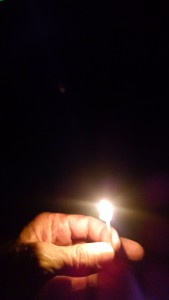
And when years of hurt and darkness in a person are illuminated by the light of love, that loved person goes forward with a new light that brightens the eyes of many that person sees over the course of a lifetime. And then all those people touched by that light which was once darkness bring more light into the eyes of all those they see. Love has this power in the world. Love has this power in the heart.
The resolve born in the heart of a person who feels truly loved changes the way life feels for that person.
First the person loved begins to feel strong enough to look deeply into the eyes of his or her own emotions: fear, anger, sadness, joy, hope.
Once those emotions are fully accepted in the self, those emotions provide better guidance. With better guidance, now from within, the self creates a life that feels better.
From this life that feels better, the self loved deeply by another begins to love deeply the self. When we love ourselves deeply, we become more clear about who we are and what we want.
As we become more clear about who we are and what we want, decisions come more easily. As our decisions, based on guidance from our own feelings, produce a better life, we walk moment to moment with a core, solid, palpable sense of resolve. This quality of resolve supports us feeling safe in the world, because we feel safe with ourselves.
Fear seems contagious, but so does love. Which will you catch?
New York Times bestseller, Gary Zukav, introduced me to the love/fear paradigm years ago through his book, The Seat Of The Soul. It’s become clear to me, after 35 years counseling folks in all kinds of pain, that , more often than not, we are walking in either a state of love or a state of fear. Thank goodness, shift happens.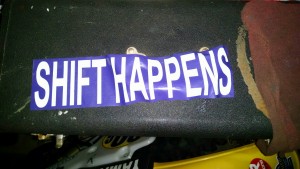
Trust, peace, tenderness, openness, gratitude, kindness, and healthy power: these are all emotions born of an inner experience of love.
Doubt, anxiety, anger, confusion, discontent, bitterness, rigidity, impatience and unhealthy power: these are all emotions born of an inner experience of fear.
Love and fear, like all emotions, are just that–emotions. Period. One emotion is no better than the others. All are just sign posts on the journey of our lives.
But here’s the important difference between those emotions in the love category and those emotions in the fear category. Those emotions born of an Innernet of love make us feel good. Those emotions born of an Innernet of fear make us feel bad.
By the way, I refer to these two states as Innernets because these core emotions have a measurable effect on a core aspect of our brains, the neuronets.
So while no emotion is bad, all emotions have a good or bad impact on how we feel, which affects our hormones, neuropeptides and neuronets. And this has a good or bad impact on our bodies.
Fundamentally, what helps us and our bodies most is to experience whatever emotion shows up and then gradually shift ourselves to an Innernet state that feels good or better.
This shift is not about thinking. To access an Innernet state that feels better, you have to deal with feeling.
So here’s a quick, three-step technique to make Shift Happen:
- Ask yourself regularly, “What’s my core feeling: love or fear?”
- Ask yourself, “Does this core feeling serve me right now?” Sometimes we are given guidance by our anger, sadness or fear. As a result, sometimes it’s important that we experience those emotions.
- If your core emotion right now does not serve you, gently shift what you experience at a core level, in your gut, to a feeling more like love.
In making Shift Happen for yourself, it’s important that you gauge the shift with your gut and not your mind. Your body can help here. Your body has ways of telling you that you are moving into an Innernet state of love: breathing slows, face relaxes, stomach quiets, and body movements become more fluid, just to name a few.
If you’re having trouble creating a shift in yourself to loving kindness, it’s OK. Be gentle with yourself. Don’t force or wrestle yourself into a state that feels better. Simply set an intention regularly to feel more of this inner goodness, and then invite that better feeling when you can. Again, the real shift happens at the emotional and physical level. To truly make a shift in this way requires fundamental shifts in body chemistry and form. This can take time. Please be patient with yourself.
If it helps, try going for the feeling you have when you’re in the arms of someone you love. Again, the feeling matters more than the thought. Or go for the feeling you have when holding a baby, or a puppy. Thoughts can take you there, but the destination we’re after is the feeling. Let your whole self and body bask in this feeling. Then Shift Happens.
You’ve probably seen those commercials with Jeff Goldblum as Brad Bellflower for Apartments.com promoting the Apartminternet. At the end of the commercials he proclaims, “Change your apartment, change the world!” Well, that’s close.
All of us have had experiences we wish we could change. Things we’ve done we wish we hadn’t. People we’ve hurt we wish we could unhurt. More painful still, there are those among us walking around feeling badly about themselves while every one else thinks of them as remarkable people.
And yet compassion for ourselves just the ways we are, and including those aspects of ourselves that feel dark to us, brings a light that can “heal forward.”
Endorsed by two New York Times bestselling authors.”
